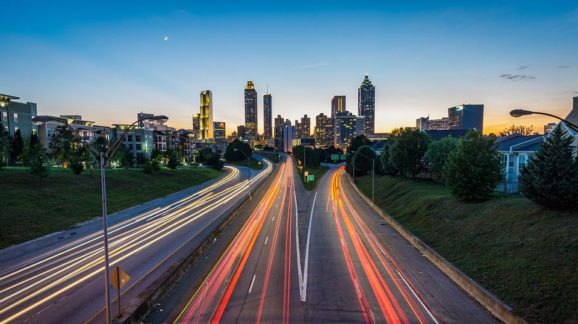The Right Kind of Stimulus
Ask any politician about infrastructure, and they’ll tell you they’re for it. And why wouldn’t they be? Most politicians view infrastructure spending as a means to provide economic stimulus and bring home the bacon. As a result, public infrastructure investments are often poorly prioritized and needlessly costly. How to pay for it, where the money would be best spent, and even what “infrastructure” means are questions often left unresolved.
Infrastructure investment is essential to economic prosperity. To invest smartly, public officials must recognize important differences between asset classes, project types and questions of who is paying and how. That requires abandoning the urge to use infrastructure spending to boost growth and more deliberate decision making.
Most evidence runs counter to the infrastructure-as-stimulus crowd’s wishful thinking. Economists are divided on the proper level of public infrastructure spending. Research indicates that while the impact of public infrastructure investment on aggregate output may be positive, the effect is much smaller than previously believed. It is likely even lower, as many studies conflate public investment with infrastructure generally, including privately provided infrastructure, as OECD economists have noted. In emerging economies, poorly implemented public infrastructure investments can actually depress total investment and reduce growth, according to International Monetary Fund research.
Wealthy countries have been burned by overzealous infrastructure spending, too. To jumpstart its stalled economy in the early 1990s, the Japanese government spent more than $6 trillion on public construction projects over two decades. That failed to increase economic growth, but it did send Japan’s gross debt soaring up to 245 percent of GDP by 2015, with debt-service payments accounting for a quarter of total government expenditures.
Massive infrastructure spending doesn’t do much for employment, either. A recent evaluation of the Obama-era infrastructure stimulus legislation, the American Recovery and Reinvestment Act, found that additional highway spending had no impact on employment in the counties where projects were built. Another study found that protectionist “Buy America” steel policies alone drove up ARRA infrastructure costs by $6 billion – pure waste.
The large development effects claimed by “megaproject” boosters rarely materialize or are otherwise undetectable. Oxford University economic geographer Bent Flyvbjerg has found that operational viability is generally overstated, cost overruns of 50 to 100 percent are the norm, and customer demand forecasts are frequently off by 20 to 70 percent.
What can be done to improve infrastructure policy?
First, lawmakers should prioritize the highest-value infrastructure investments that are needed in their communities and eschew the next shiny object. For example, Nashville’s city government is currently contemplating a multibillion dollar light rail network, despite the fact that Nashville’s auto-oriented urban layout makes mass transit, particularly rail, ill-suited and of low-value to residents. Meanwhile, private cellular carriers’ plans to bring 5G to the Nashville metro area will generate far greater economic returns with trivial public investment – and may even enable the self-driving cars of the future that could render most existing mass transit systems obsolete. The better policy option is clear.
Second, federal lawmakers should incentivize local governments to invest in maintaining their surface streets, mass transit systems and water and wastewater networks. If there is an infrastructure crisis in America, it is the failure to maintain existing infrastructure. Maintenance backlogs total hundreds of billions of dollars nationwide. Unfortunately, federal infrastructure funding generally focuses on initial capital investment ribbon cuttings rather than operations and maintenance, where most costs are incurred throughout a project’s lifecycle. This has led to gold-plated overbuilding on the federal dime and state and local neglect when maintenance bills come due. Allowing states to “flex” more of the federal capital spending to operations and maintenance would likely reduce incentives to build bigger rather than better.
Third, government leaders should remove barriers to credit for infrastructure projects, like the unfair tax advantage given to public infrastructure investment. Instead of pouring more money into the same funding channels, the federal government should try to attract the private sector into shouldering more public-purpose project risk and eliminate duplicative permitting requirements and other unnecessary regulations. Public-private partnerships using private activity bonds and other debt instruments would lower costs and speed delivery of highway, airport, inland waterway and water and wastewater projects. Traditional government grant funding should only go to projects the private sector is unlikely to back.
Finally, governments at all levels should learn from private infrastructure providers. Most U.S. infrastructure is private. Nearly all investment in telecommunications, railroads and electricity infrastructure comes from private sources. These three sectors alone invest more than $100 billion in private capital annually. Businesses don’t view infrastructure spending as a tool to increase national output. They evaluate projects on a case-by-case basis to maximize their investment returns, while offering consumers better services and lower prices. Smart public infrastructure policy will involve careful cash infusions, not a broad stimulus.
Originally published to U.S. News & World Report.
